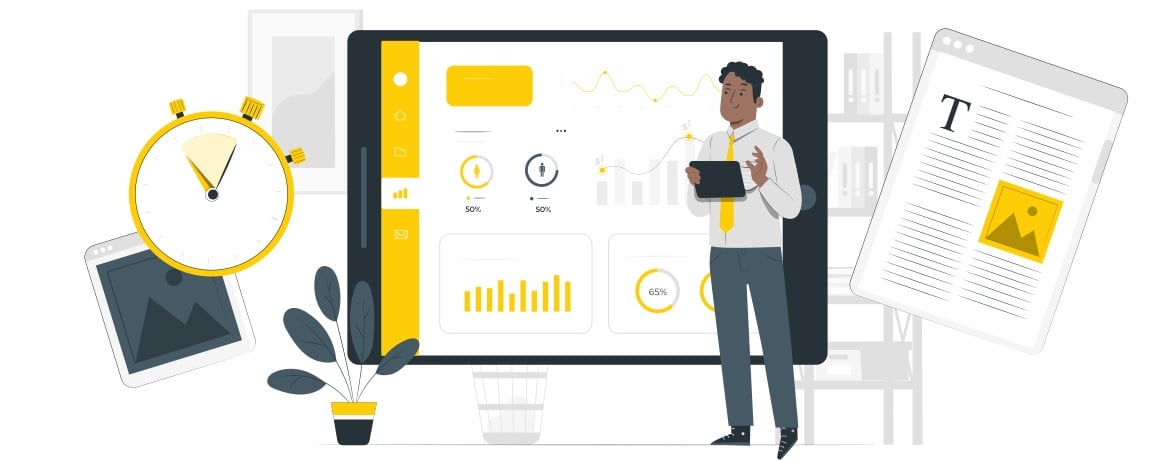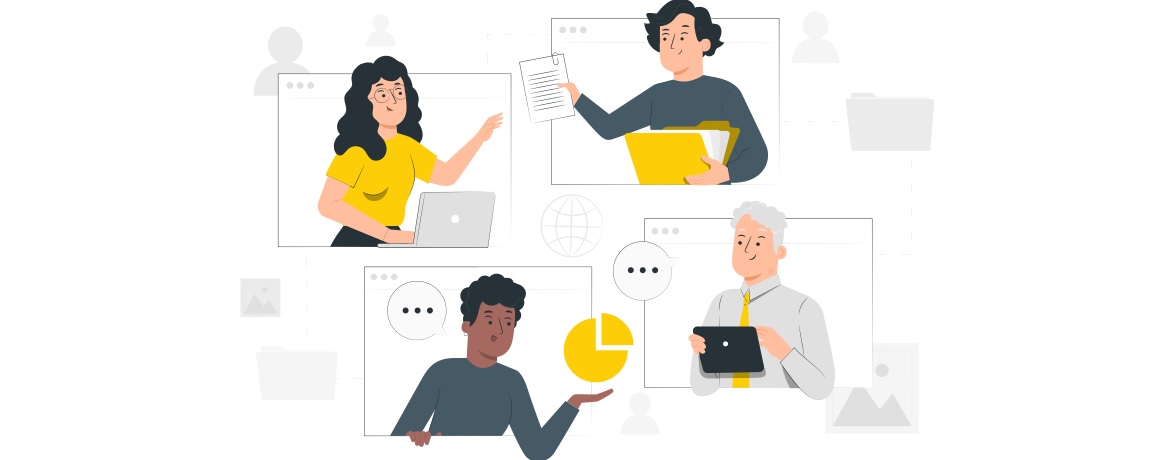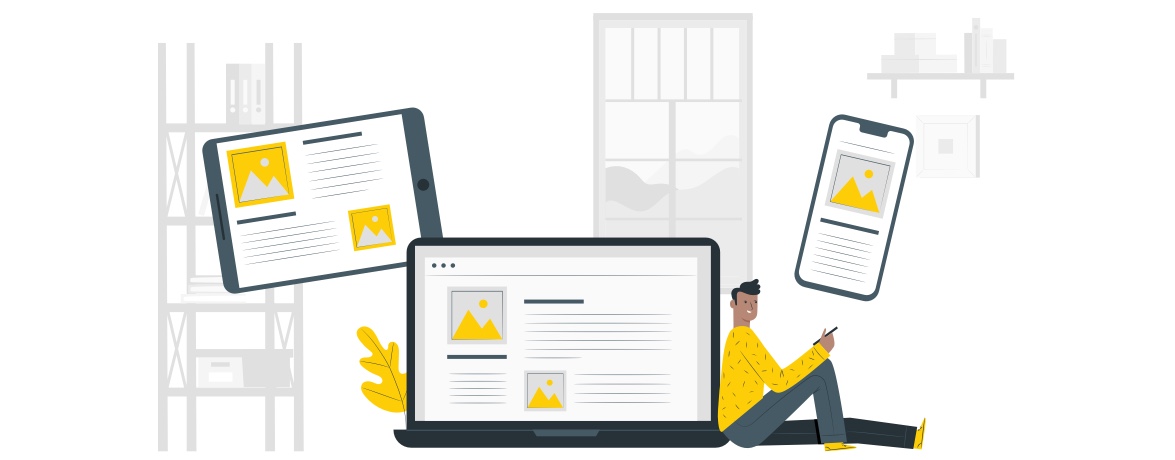21 Oct 21
Internet Web Statistics 2023 – How Covid-19 Has Changed Online and Digital [UPDATED]
Before the coronavirus pandemic, private and public organisations were moving at different speeds in embracing a digital business model. However, the last 2 years have seen the biggest shockwaves of digital disruption, felt across almost all industries, with many forced to take their business online to survive, and others optimising their digital operations to continue to stay ahead. Digital disruption happened no matter if you’re in Melbourne, Sydney or Brisbane.
Predating Covid-19, web visitors took only 50 milliseconds (0.05 seconds) to form an opinion about your website. But how have those user behaviours changed now? How can you know what long-term changes to expect? How can you be mindful of these user expectations to implement digital strategies that will make your business more convenient and accessible?
Our COVID-19 findings will explore the impact felt across online and digital environments, the change in user behaviours and expectations, digital marketing strategies and the world of eCommerce.
Top COVID-19 Influenced Online Digital Findings

- 68% of consumers say that they have much higher expectations for businesses’ digital capabilities following COVID-19 (Source)
- 88% of customers expect companies to accelerate digital initiatives due to COVID-19 (Source)
- 24% of consumers will increase long-term use of digital channels due to COVID-19 (Source)
- According to KPMG’s 2020 global survey, 67 % say they’ve accelerated their digital transformation strategy as a result of COVID-19 (Source)
- 54% want to see companies introduce new products or services in response to the pandemic. (Source)
- 44% of B2B marketers have ‘completely changed’ their marketing channel mix since the pandemic began. A huge 91% of marketing organisations now use social media as part of their mix, tying with digital ads as the most commonly used channel across the sector. (Source)
- On a global scale, “face-to-face” digital interaction via video-conferencing software such as Zoom, has shown increasing uptake in the past months, and in countries where lockdown measures are more strict, these numbers are even higher. (Source)
- 29% of respondents said that the biggest motivation for opening their own business is being their own boss. (Source)
Changes In User Behaviours & Digital Expectations in 2021

With dramatically reduced opportunities to meet up in person, people have embraced technologies like Zoom, Google Meets and a host of new technologies to satisfy the innate human needs of social interaction and connection.
There has been a vast increase in digital communication. The data showed that 43% of respondents use text messaging more often. This was followed by an increase in voice calls (36%), social media (35%), and video calls (30%). Almost a quarter of people more frequently used email (24%), and just over one fifth played online games more often (22%). (Source)
How has COVID-19 changed user expectations?
- 76% of customers expect consistent interactions across departments, yet 54% say it generally feels like sales, service, and marketing teams don’t share information. Customers expect connected journeys (Source)
- Despite the opportunity for brands to increase digital revenues, 59% of consumers are not happy with the level of personalisation and reassurance delivered online by most companies. 50% say they’ll switch or spend less with such brands. (Source)
- 88% of consumers trust user reviews as much as personal recommendations. (Source)
- Only 27% of consumers completely understand how companies use their personal information, and 86% want more transparency. Customers expect data protection: Make trust your priority. (Source)
- 71% of customers pay more attention to corporate values than they did a year ago. Empathetic, unified teams build differentiated engagement. (Source)
- 47% of people expect a web page to load in two seconds or less. (Source)
- 98% of Australian internet users aged 16-64 still use a conventional search engine, over 1 in 3 users turned to social media to gather information about brands they were considering. This proves that a brand’s social presence is just as important, if not more important, than their website for communicating who they are, what they stand for, and what they offer. (Source)
How COVID-19 Has Influenced Digital Marketing – Trends & Statistics

IAB UK’s CEO, John Maw, said of the findings, “We saw three years of change take place in just three months. Advertisers in turn adopted a more digital-heavy strategy as it was the medium least impacted by lockdowns.
- Search held onto its title as the biggest digital channel, with ad spend increasing 49% in this category compared to H1 2020, reaching £5.5 billion. (Source)
- Google Advertising revenue grew 69% year-on-year in Q2 2021, rising from $29.8bn to $50.4bn, a financial statement reveals. (Source)
- Mobile ad spend saw a 75% uplift as users continued to spend time scrolling and engaging with content. (Source)
- 63% say they’ve increased their digital transformation budget as a result of Covid-19 (Source)
- Social media, now at 1 hour 46 minutes per day, accounts for roughly one-third of the time spent online, making it the second most popular media activity for Australians after watching television. (Source)
How COVID-19 Has Influenced Online eCommerce Statistics

Amid slowing economic activity, COVID-19 has led to a surge in e-commerce and accelerated digital transformation.As lockdowns became the new normal, businesses and consumers increasingly “went digital”, providing and purchasing more goods and services online.
With travel restrictions and physical shopping severely limited, 75% of Australians went online to do their shopping, creating a large spike in a wide range of markets; fashion, groceries, electronics, DIY and hobbies.
- E-commerce’s share of global retail trade increased from 14% in 2019 to about 17% in 2020. (Source)
- Digital payments and digital currencies are likely to have a key role in the post-pandemic situation. (Source)
- Investment into strong security measures is incredibly important – with the surge in the use of digital technologies, we are now witnessing a rise in online fraud, scams, intrusions, and security breaches. The pandemic has created a scenario of insecurity that is inviting fraudsters to exploit the crisis situation by extracting money or information. (Source)
- Amazon is up 78 percent this year and Apple is up 60 percent and is now bigger than the bottom third of companies in the S&P 500 combined. (Source)
- The growing popularity of ‘buy online for pickup in store’ (BOPIS), which has seen over a quarter of adults in the USA (26%), Mexico (28%) and India (33%) using the service more, suggests strong audience appetite for convenience. (Source)
The Future of Online & Digital Following COVID-19
It’s safe to say 2020 was a year like no other, in Australia and across the globe. It is easily the catalyst of a big shift towards digitisation for most businesses in every industry.
Before coronavirus, innovative business strategies consisted of environmental issues such as sustainable production, reduction in pollution and climate change. Consumers were more loyal and conscious of choosing companies that demonstrated their efforts and authenticity in these areas.
Now faced with a global health crisis, environmental sustainability has merged with issues of personal safety. Consumers have been wearing disposable masks and gloves, and opting for more individual packaging than ever. Companies can excel in these areas through providing long-term sustainable packaging and safe-distancing alternatives moving forward.
Before 2020, many companies weren’t very confident in adopting digitisation strategies, whilst doubting the technological skills of their own workforces. Yet, when push came to shove with the pandemic-induced regulations, those anxieties have proved to be merely an abstract barrier that have been quickly overcome.
This has served as a great reminder in making the most of the tools and technology available at hand, and not merely resting on the laurels of what worked in the past.
As the world moves forward from the tight grasp of COVID-19, companies must continue with their efforts in embracing and optimising their digital experiences, to thrive in a whole new landscape and the increased expectations of more tech-savvy consumers.


